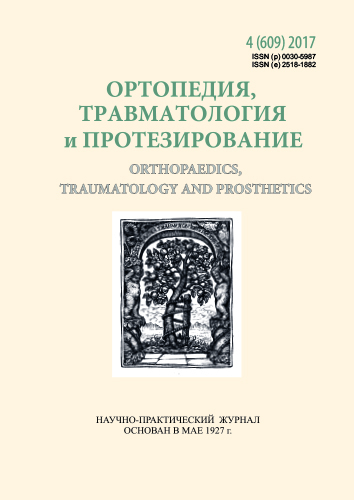Improved method of clinical assessment pelvic muscle functional activity, that are responsible for postural balance
DOI:
https://doi.org/10.15674/0030-59872017428-33Keywords:
muscle disorders, postural balance, hip jointAbstract
The development of degenerative-dystrophic process in the hip joint often leads to a disruption of the pelvic grid muscles, the main indicator of which is the ability to maintain a dynamic horizontal balance of the pelvis under conditions of single-leg standing.
Objective: to improve the method of evaluation of the function of skeletal muscles of a person who are responsible for preserving the postural balance. Methods: scale of evaluation of functional activity of muscles is developed, which involves the use of well-known methods of clinical examination. In this analysis of indicators such as the pelvic angle and trunk during walking, the stability of single-leg standing, objective and subjective assessment of resistance, etc., makes it possible to comprehensively assess the degree of functional disorders of the muscles that are responsible for maintaining the postural balance.
Results: validity of the indicated evaluation scale was studied according to the data of three groups of patients for 12 months. It has been established that the proposed assessment scale enables to objectively evaluate the functional state of the muscles responsible for the postural balance and can be used to dynamically monitor the process of rehabilitation of patients during treatment. It was found that in patients with coxarthrosis of ІІ–ІІІ stages, in the absence of treatment during the year, important decreases in the function of these muscles, and the use of conservative treatment does not contribute to its recovery. Endoprosthetics of the hip joint allows improving the function of the muscles responsible for the postural balance, although in some patients, muscle function impairment is determined within one year after surgery.
Conclusions: the technique of ball assessment of the functional state of the muscles responsible for the postural balance is proposed, its efficiency and effectiveness are proved. This gives grounds for recommending it for an objective clinical evaluation of the functional state of the muscular system in patients with diseases and effects of hip injuries.
References
- Bogdanov VA, Gurfinkel VS. Biomechanics of human locomotion. Physiology of movement. L, 1976:276–315. (in Russian)
- Tyazhelov AA, Karpinsky MYu, Goncharova LD, Lobanov GV, Borovoi IS Modeling of the work of muscles providing horizontal balance of the pelvis in a single-bearing standing. Trauma. 2014;15(2):136–42. (in Russian)
- Shapovalov V.M. Distribution of the load in the hip joint with dysplasia of the ventral region and osteonecrosis of the femoral head. Traumatology and Orthopedics of Russia. 1998;(3):22–6. (in Russian)
- Arokoski MH, Arokoski JP, Haara M, Kankaanpää M, Vesterinen M, Niemitukia LH, Helminen HJ. Hip muscle strength and muscle cross sectional area in men with and without hip osteoarthritis. JRheumatol. 2002 Oct;29(10):2185–95.
- Borovoi IS, Lobanov GV, Goncharova LD, Tyazhelov AA, Comparative evaluation of the effectiveness of restorative treatment of victims with unstable fractures of the pelvis type V. Bulletin of orthopedics, traumatology and prosthetics 2014;No.4:24–8. (in Russian)
Downloads
How to Cite
Issue
Section
License
Copyright (c) 2018 Roman Klymovytskyy, Olexiy Tyazhelov, Larisa Goncharova

This work is licensed under a Creative Commons Attribution 4.0 International License.
The authors retain the right of authorship of their manuscript and pass the journal the right of the first publication of this article, which automatically become available from the date of publication under the terms of Creative Commons Attribution License, which allows others to freely distribute the published manuscript with mandatory linking to authors of the original research and the first publication of this one in this journal.
Authors have the right to enter into a separate supplemental agreement on the additional non-exclusive distribution of manuscript in the form in which it was published by the journal (i.e. to put work in electronic storage of an institution or publish as a part of the book) while maintaining the reference to the first publication of the manuscript in this journal.
The editorial policy of the journal allows authors and encourages manuscript accommodation online (i.e. in storage of an institution or on the personal websites) as before submission of the manuscript to the editorial office, and during its editorial processing because it contributes to productive scientific discussion and positively affects the efficiency and dynamics of the published manuscript citation (see The Effect of Open Access).














